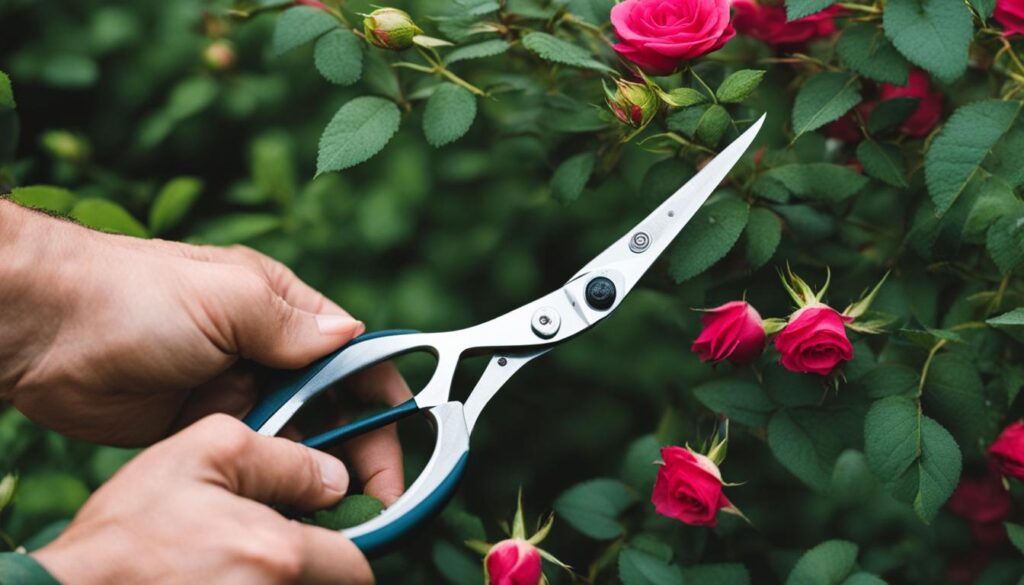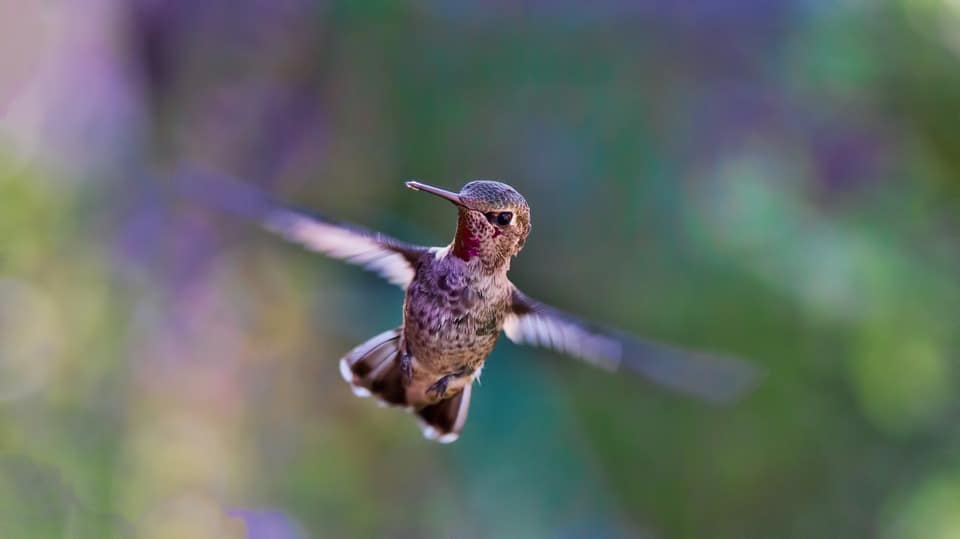Welcome to our comprehensive guide on how to trim drift roses. Whether you’re a seasoned gardener or just starting out, mastering the art of pruning drift roses is essential for maintaining their health and beauty. In this step-by-step guide, we’ll walk you through the process of transplanting, pruning, and ongoing maintenance pruning for these lovely flowers.
Transplanting and pruning drift roses may seem daunting at first, but with the right techniques and a little patience, you’ll be able to achieve stunning results. So let’s dive in and learn how to trim drift roses to perfection!
Key Takeaways
- Transplant drift roses by watering thoroughly, preparing the new garden bed, and pruning back the canes.
- Prune drift roses in early spring just before new growth begins, removing dead wood and shaping the plant.
- Different types of drift roses may require specific pruning techniques, such as hard pruning for hybrid teas and moderate pruning for floribundas.
- Consider additional pruning considerations, including initial pruning for newly planted roses and ongoing maintenance pruning to promote healthy growth.
- By following these pruning techniques and considerations, you can ensure the health and beauty of your drift roses for years to come.
When and How to Prune Drift Roses
Pruning drift roses at the right time and using proper techniques is essential for maintaining their health and promoting abundant blooms. Here, we will guide you on when to prune drift roses and the correct methods to follow.
When to Prune Drift Roses
The ideal time to prune drift roses is in early spring, usually in April or May, just before new growth begins and as the buds start to swell. Pruning at this time allows the roses to recover quickly and encourages vigorous growth throughout the growing season.
How to Prune Drift Roses
When pruning drift roses, it is crucial to use sharp pruning shears to make clean cuts just above an outside-facing eye or growth bud. Angle the cut slightly away from the bud to allow moisture to drain effectively. Remove any dead, damaged, or crossed canes to maintain the plant’s overall health and appearance.
To ensure proper pruning, cut back each cane in short segments until all dead wood is removed, and you reach green, growing wood. This encourages healthy regrowth and prevents the spread of diseases. Additionally, climbers and ramblers should be lightly pruned after flowering to maintain their shape and encourage new blooms.
By following these general principles and guidelines for pruning drift roses, you can effectively manage their growth and promote a vibrant and beautiful display of flowers in your garden.
| Drift Rose Pruning Tips | Key Points |
|---|---|
| Timing | Prune in early spring, before new growth begins. |
| Cutting Technique | Use sharp pruning shears and make clean cuts just above an outside-facing eye or growth bud. |
| Removal of Dead or Damaged Canes | Remove any dead, damaged, or crossed canes to maintain overall plant health. |
| Pruning Climbers and Ramblers | Lightly prune climbers and ramblers after flowering to maintain their shape and encourage new blooms. |
Tips for Pruning Different Types of Drift Roses
Pruning drift roses is an essential part of their care routine, ensuring healthy growth and abundant blooms. However, it’s important to consider the specific type of drift rose you have, as different types may require slightly different pruning techniques. Here are some tips for pruning specific types of drift roses:
Hybrid Tea Roses and Grandifloras
For hybrid tea roses and grandifloras, you can prune them hard by cutting about four inches from the ground. This will result in a moderate garden display. If you prefer larger but fewer flowers, you can prune them further back. Remember to make clean cuts just above an outside-facing eye or growth bud, and angle the cut slightly away from the bud to allow moisture to drain.
Floribundas
When it comes to floribundas, it’s best to prune them by cutting the top of each stem back by about one-third. This will help promote healthy growth and abundant flowering. Again, make sure to use sharp pruning shears and make clean cuts just above an outside-facing eye or growth bud.
Climbing Roses
Climbing roses require regular attention for optimal growth and flower display. Basic maintenance pruning should be done in early spring, and after the first flush of flowering, the laterals should be cut back to within two or three buds of the main canes. This will encourage new growth and help maintain the overall shape of the climbing rose.
Shrub Roses
In general, shrub roses require only light pruning in early spring. Focus on removing any dead, broken, or weak stems, as well as maintaining a balanced shape. Avoid excessive pruning, as this can impact the overall health and vigor of the shrub rose.
By following these tips for pruning different types of drift roses, you’ll be able to achieve the desired growth and flowering patterns for your specific rose varieties. Remember to always use sharp pruning shears, make clean cuts, and consider the unique needs of each type of drift rose when planning your pruning routine.
Additional Pruning Considerations for Drift Roses
When it comes to pruning drift roses, there are a few additional considerations that can help ensure their optimal health and beauty. Here are some important tips to keep in mind:
1. Pruning Newly Planted Drift Roses
For newly planted drift roses, it’s crucial to provide them with the right start by pruning them immediately after planting. This initial pruning should focus on removing any dead, broken, or weak wood, as well as stems that rub or cross. The level of pruning will depend on the specific type of rose, so be sure to tailor it accordingly. Hybrid teas, floribundas, species roses, climbers, and miniatures each have their own pruning requirements, so take the time to familiarize yourself with the needs of your particular drift roses.
2. Addressing Suckering
Suckering refers to the growth of new shoots from below the bud union, which is commonly seen in grafted roses. To prevent excessive suckering, promptly remove any shoots that emerge below the bud union. Additionally, burying the graft union 3-4 inches below the soil surface can help minimize suckering and keep your drift roses focused on healthy growth and blooming.
3. Ongoing Maintenance Pruning
Once your drift roses are established, ongoing maintenance pruning is crucial for their continued health and beauty. This involves removing any dead, broken, or weak stems that may have developed over time. It’s also important to conduct pruning based on the specific type of drift rose you have. By maintaining a regular pruning schedule and following the appropriate techniques for your drift roses, you can ensure that they remain well-formed and continue to produce abundant blooms.
| Type of Drift Rose | Pruning Technique |
|---|---|
| Hybrid Teas and Grandifloras | Prune hard, cutting about four inches from the ground for moderate garden display or further back for larger, but fewer, flowers. |
| Floribundas | Prune by cutting the top of each stem back by about one-third. |
| Climbing Roses | Perform basic maintenance pruning in early spring. After the first flush of flowering, cut back the laterals to within two or three buds of the main canes. |
| Shrub Roses | Generally require only light pruning in early spring. |
By considering these additional pruning tips for drift roses, you can ensure that your plants thrive and beautify your garden for years to come. Remember to tailor your pruning approach to the specific type of drift rose you have and stay consistent with ongoing maintenance pruning. With proper care and attention, your drift roses will reward you with their stunning blooms and vibrant growth.
Will Trimming Drift Roses Help Prevent Vine Borer Infestation in My Garden?
Trimming drift roses can indeed help prevent vine borer infestation in your garden. By regularly cutting back the roses, you can remove any potential hiding spots for the vine borer larvae. Additionally, keep an eye out for telltale signs of vine borer activity, such as wilting or yellowing plants.
Conclusion
Trimming drift roses is a crucial part of maintaining their health and beauty. By following the proper techniques for transplanting, pruning, and ongoing maintenance, you can ensure that your drift roses thrive year after year. Whether you’re a seasoned gardener or a beginner, these simple steps will help you master the art of trimming drift roses.
First and foremost, make sure you water your rose bushes thoroughly before transplanting. This will ensure that the roots are well-hydrated and ready for the move. When transplanting, be gentle and try to keep as much soil around the roots as possible. This will help the rose bush establish itself in its new location.
When it comes to pruning, timing is everything. Prune your drift roses in early spring, just before new growth begins. Be sure to use sharp pruning shears and make clean cuts just above an outside-facing eye or growth bud. Removing dead, damaged, or crossed canes will promote healthy growth and abundant blooms.
Remember that different types of drift roses may require slightly different pruning techniques. Hybrid tea roses and grandifloras can be pruned hard, while floribundas need a more moderate pruning approach. Climbing roses require regular attention, and shrub roses generally require only light pruning.
By considering these tips and techniques, you can confidently trim your drift roses and enjoy their beauty in your garden. With a little care and attention, your drift roses will reward you with stunning blooms and a vibrant landscape.
FAQ
What are the steps to transplant drift roses?
To transplant drift roses successfully, water the rose bush thoroughly before transplanting, prepare the new garden bed with organic matter, prune the rose canes, dig a hole and add organic matter, gently remove the rose bush from its current location, plant it in the prepared hole, water thoroughly, apply rose fertilizer, and cover with organic mulch.
When is the best time to prune drift roses?
The best time to prune drift roses is in early spring, usually in April or May, just before new growth begins and as the buds begin to swell.
What are the general principles for pruning drift roses?
When pruning drift roses, it is important to use sharp pruning shears, make clean cuts just above an outside-facing eye or growth bud, angle the cut slightly away from the bud, remove any dead, damaged, or crossed canes, and cut back each cane in short segments until all dead wood is removed and green, growing wood is reached.
Are there specific pruning techniques for different types of drift roses?
Yes, different types of drift roses may require slightly different pruning techniques. Hybrid tea roses and grandifloras can be pruned hard, floribundas should be pruned by cutting the top of each stem back by about one-third, climbing roses need regular attention with basic maintenance pruning in early spring and cutting back laterals after the first flush of flowering, and shrub roses generally require only light pruning in early spring.
What are some additional considerations for pruning drift roses?
Some additional considerations for pruning drift roses include pruning newly planted roses immediately, removing any dead, broken, or weak wood, removing suckers from grafted roses, burying the graft union to minimize suckering, and ongoing annual maintenance pruning to remove dead, broken, or weak stems and prune based on the specific type of rose.
Why is trimming drift roses important?
Trimming drift roses is important to promote healthy growth, abundant blooms, and disease resistance in the roses.









